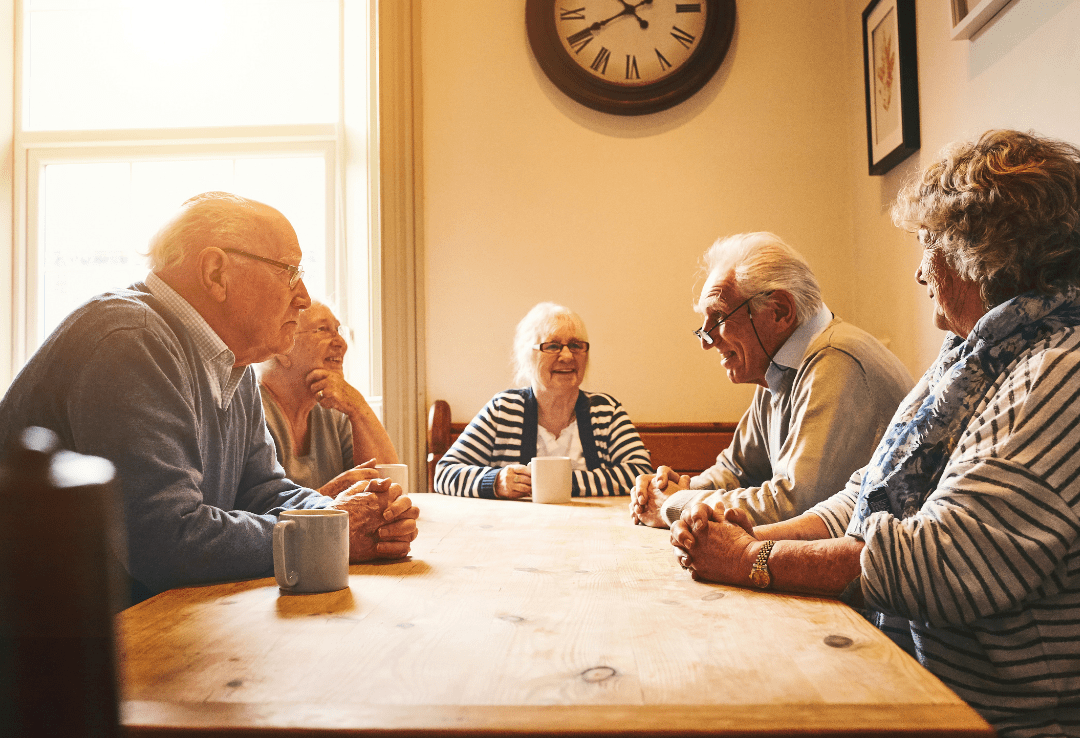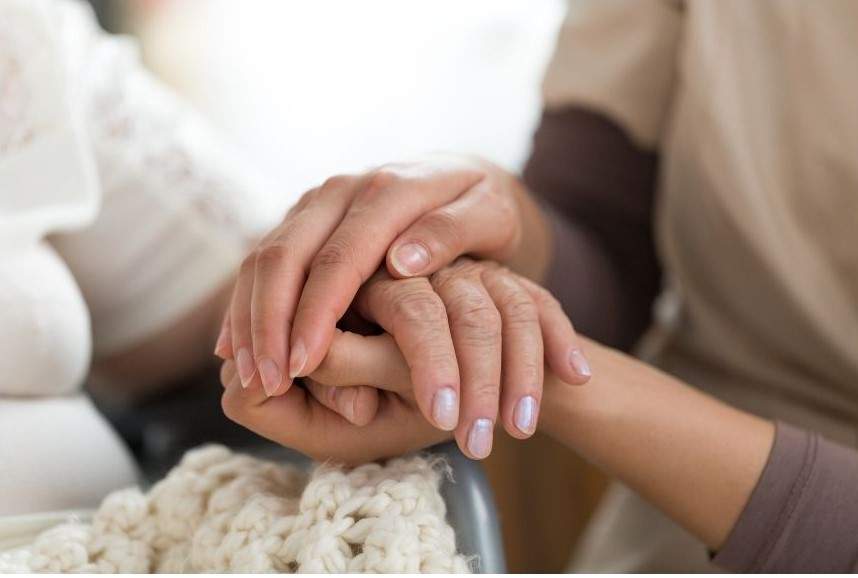This guide offers helpful tips for seniors and their families to better understand Alzheimer’s disease and its impact. Embracing awareness can foster a supportive environment for those living with the disease, providing resources to manage daily life and maintain dignity.
Continue readingRecognizing the Signs Your Loved One Needs Memory Support
Recognizing the signs that a loved one may need memory support is essential for ensuring they receive the care they deserve. This guide offers valuable insights into common symptoms of memory loss and how to approach the conversation about seeking professional help.
Continue readingBrain Exercises for Older Adults
As we age, our bodies undergo a number of physical changes. Just as our joints and muscles can stiffen up with age, so can our brains. In fact, according to the National Institute of Health, aging causes changes to the brain size, vasculature and cognition. The normal aging process can bring subtle changes in cognitive abilities that can impact our ability to learn something new, recall names, and cause us to occasionally forget appointments. However, we have the ability to slow down the aging process by instilling healthy habits that promote brain stimulation and sharpness.
Supporting a Healthy Brain
Our bodies and brains are interconnected and when we take care of one, we take care of the other. Implementing small, healthy changes into our daily routine can help protect our brains from cognitive decline and help prevent mood disorders such as depression. According to U.S. News, here are a few ways you can support brain health each day:
Exercise. Physical exercise isn’t only good for our bodies, but also for our brains. They work to control our muscles and coordination and help us slow down and speed up. Exercises such as ballroom dancing, yoga and biking require our brains to think about next steps and move sequences.
Stay socially engaged. Human interaction is proven to keep our brains sharp by reducing feelings of stress and promoting the release of endorphins, which are the body’s natural feel-good hormone. Spending time with friends and family members can provide the mental stimulation needed to strengthen our cognitive skills and mental clarity.
Quit smoking. While smoking is bad for you for a number of health reasons, it can also severely impact brain function. Smoking just one cigarette a day for an extended period of time can actually reduce cognitive ability, thinking and memory. When you stop smoking, circulation can improve almost instantly.
Eat a healthy diet. Heart-healthy diets can support brain health, help maintain a healthy weight, and reduce the risk of developing chronic illnesses and cognitive issues. Gut health and cognitive function are closely linked. The more we focus on creating a healthy gut microbiome, the better our brains will be able to function.
Focus on good sleep. Sleep helps our bodies repair from both emotional and physical stress. When we don’t get enough quality sleep, it can disrupt our brain’s ability to perform certain biological changes.
Mental Exercises for Brain Sharpness
In addition to implementing healthy habits into your daily routine, there are other ways you can support brain health. Doing certain brain exercises can help boost your memory, improve concentration and focus. Improving brain health can make daily tasks, like remembering appointments or balancing your check book, feel easier. According to Healthline Magazine, here are a few evidence-based exercises that can help support brain health:
- Jigsaw puzzles. Research has shown that puzzles require us to use multiple cognitive abilities including spatial awareness and problem-solving. Working on a jigsaw puzzle for just a few minutes a day can improve cognitive thinking and help keep your brain sharp.
- Cards. Like puzzles, card games also ignite different areas of the brain and help improve memory and thinking skills. Card games such as solitaire, bridge, gin rummy, poker, hearts and crazy eights are entertaining and help support brain health.
- Dancing. Certain types of dance can actually help increase your brain’s processing speed and memory. Salsa, tap dance, Zumba and ballroom dancing require you to anticipate next movements and remember a sequence of steps, all of which require the brain to work hard, improving cognitive function and memory skills.
- Listen to music. Research has shown that happy, upbeat music can help generate creativity and brain power. This can help us with problem-solving and make learning new things feel easier.
- Meditate. Daily meditation can promote calmness and reduce stress and anxiety. However, most people don’t know that meditation can also improve memory and increase our brain’s ability to process new information.
- Practice tai chi. Regularly practicing tai chi can help reduce stress, enhance sleep quality and even improve our memory. Some studies suggest that long-term tai chi practice can even increase brain volume.
Prioritizing Brain Health at Maple Knoll Village
At Maple Knoll Village, we know how important it is to preserve cognitive function well into our later years. That’s why many of our offerings, from meal options to activities, are designed to support brain health in a number of different ways. To learn more about these offerings or to schedule a tour, please contact us!
Noticing Memory Loss in Loved Ones
As we age, it’s very common to notice changes in our physical and cognitive abilities. While these conditions might spark worry and concern about their overall health, they can be normal age-related changes. However, when it comes to memory, it’s important to understand the difference between normal mild forgetfulness common with aging and serious memory problems. Nearly 50 million people worldwide have been diagnosed with dementia, which is group of symptoms affecting memory, thinking, and social abilities. While some memory loss is common with aging, dementia is not a normal part of aging. Alzheimer’s, which is the most common form of dementia makes up 60-70% of all dementia cases and is the sixth leading cause of death in the United States. While Alzheimer’s disease and dementia can look different on each individual, many people first notice changes in their memory and cognitive abilities. While it can be tempting to ignore the warning signs in a loved one, it’s important to address them early on in the disease. The first step in addressing memory loss in a loved one is to get familiar with the warning signs of Alzheimer’s disease and dementia.
Signs and Symptoms of Alzheimer’s disease and Dementia
The warning signs of Alzheimer’s disease can be very subtle and difficult to identify at first, especially for the individual who is experiencing symptoms. In many cases, family members often notice changes in their loved one first. While every case is different, the Alzheimer’s Association has compiled a list of the most common warning signs of Alzheimer’s disease. It’s important for family members to become familiar with these signs to ensure an early diagnosis for their loved one.
- Memory loss that disrupts daily life. One of the most common signs of Alzheimer’s disease, especially in the early stages, is forgetting newly learned information. You might notice your love one repeating questions, using memory aids like notes and alarms, or relying on family members for tasks they were once able to handle themselves. It is normal for older adults to occasionally forget appointments, but remember them later on.
- Difficulty with problem solving. It’s normal for older adults to make occasional errors when managing finances or household bills, however, those with dementia may experience progressive difficulty managing their finances or following instructions in a recipe or keeping track of monthly bills. If this interferes with daily life, it could be a warning sign of dementia.
- New problems with words in speaking or writing. Those with Alzheimer’s may have trouble following along in a conversation. You may notice your loved one repeating themselves often, struggling with recalling words, or calling objects by a wrong name.
- Misplacing items. As we age, we may misplace things from time to time but are able to retrace steps to find them. However, those with dementia or Alzheimer’s disease may put things in unusual places, misplace items and be unable to retrace steps to find them again. Some individuals may accuse others of stealing as the disease progresses.
- Changes in mood and personality. Some individuals with dementia and Alzheimer’s disease may experience mood and personality changes, such as becoming confused, suspicious, anxious, fearful or depressed. This can occur at home or when they are out of their comfort zones.
What to Do When You Notice Changes?
If you’re noticing warning signs in your loved one, it can be difficult to know what steps to take next. However, it’s important to address these concerns as an early diagnosis can ensure your loved one gets the support and care they need as the disease progresses. According to Psychology Today, here are some steps to take if you are noticing signs of memory loss in your loved one:
Write down what you observe
As you prepare to talk to your loved one about memory loss, it’s important to write down what you notice. For example, perhaps your loved one is getting lost going to the grocery store, leaving food burning on the stove, or is mismanaging finances.
Pay attention to any stressors
Write down when you began to notice the changes and note if they or gradual or sudden. It’s also helpful to note if the changes correlate with any sudden life changes such as losing a spouse or a move to a different home or new area.
Share concerns in a compassionate way
Sharing your concerns with your loved one is not an easy conversation to have at any time. However, preparing beforehand can make things easier. Think about the time and place that would be best to have the conversation and explain why you’re worried. This is a good opportunity to share your observations and ask if they’ve noticed any changes themselves. Reassuring your loved one that you are in this together and you are there to support them can also be helpful.
Help your loved one go to the doctor
Getting an early diagnosis can help your loved one access treatment options, participate in clinical trials, and make lifestyle changes that can help manage the symptoms of Alzheimer’s disease and dementia. It’s important to ask your loved one to make an appointment with their primary care physician as soon as you notice symptoms. The earlier they receive a diagnosis, the sooner they can manage the disease and help preserve cognitive function.
What if your loved one is resistant?
If your loved one quits talking or doesn’t want to listen to your concerns, you may have to start the conversation at another time. Receiving a diagnosis can be painful and scary, so giving your loved one time to accept their own cognitive changes may be necessary. You can always ask another individual who is close with your loved one or a healthcare provider to assist if appropriate.
Living with Memory Loss at Maple Knoll Communities
Our priority at Maple Knoll Communities is to provide high-quality support for all residents at every level of care. We provide additional assistance, spiritual care, and support groups for those experiencing memory loss, caregivers and family members. If you’re interested in learning more about these offerings, please contact us!
Using Diet to Boost our Memory
According to the Alzheimer’s Society, “nearly 40% of people over the age of 65 experience some form of memory loss, or age-associated memory impairment, which is considered a part of the normal aging process.” Nearly 5 million people worldwide live with dementia, a general term for the impaired ability to remember, think, or make decisions, which can interfere with daily activities. Whether you or a loved one have been diagnosed with a memory disorder, or are experiencing normal age-related memory loss, research shows that making small changes to your diet can help you increase and maintain cognitive health.
Our bodies are exposed to free radicals that can come from both internal and external sources. Certain factors, like poor diet, long-term stress, and environmental influences such as pollution, can increase the risk of developing free radicals, which can impact our cognitive function. However, nutrients from our diet can help protect our brains from free radicals and heal the damage that occurs as a result. Certain nutrients, such as antioxidants, help protect our bodies from free radicals while also promoting the electric signaling between our nerve cells, which allows our brains to communicate with our bodies. Other nutrients found in our diet, like vitamins B12, B6, and B9 are critical for brain function.
Foods that Boost Memory
While family history and genetics play a role in developing age-related memory loss and memory disorders, we can use our diets to help reduce our risk of disease and promote overall wellness. Here are some foods that contain memory-boosting benefits that can be easily added into our diets:
Pumpkin Seeds
Pumpkin seeds contain zinc, magnesium, copper and iron, which are all important nutrients for optimal brain health. Zinc plays an important role in nerve signaling, which is crucial for overall cognitive function. Low levels of zinc have been linked to Alzheimer’s disease. Magnesium is important for learning and memory, while low iron levels can lead to brain fog.
Fish
Fish, such as salmon, trout, mackerel, herring and sardines, contain omega 3 fatty acids, which is known to promote brain health. Low levels of omega 3 fatty acids have been linked to an increased risk of dementia. In addition to promoting overall cognitive function, omega 3 fatty acids can also help relieve depression symptoms.
Blueberries
Blueberries, along with other deeply colored berries, contain numerous health benefits, especially when it comes to brain health. Blueberries contain antioxidants which help relieve oxidative stress and inflammation, and also reduce the risk of brain aging. Some of the antioxidants found in blueberries are linked to improved communication between brain cells. Antioxidants have also been found to improve or delay short-term memory loss.
Coffee
The antioxidants and caffeine contained in coffee can actually help your brain work better. While the caffeine in coffee can help promote sharpened concentration for short periods of time, some studies have suggested that drinking coffee long-term is linked to a reduced risk of Alzheimer’s disease and Parkinson’s disease.
Broccoli
Broccoli is packed with antioxidants and vitamin K, which has been shown to improve memory function and reduce inflammation.
Eggs
While eggs might not come to mind when thinking of brain foods, they do contain some brain-boosting properties. Choline helps regulate mood and memory while vitamins B6, B12, and folate can help relieve the symptoms of depression.
Tips for Improving Brain Health
In addition to making small changes to your diet, adding other lifestyle changes can have a big impact. Quality sleep, proper hydration, exercise, and reducing stress are all factors in brain health and overall wellness.
Benefits of Virtual Reality for Older Adults
When we think of cutting-edge technology, senior citizens aren’t often the first to come to mind. However, a new technology has captivated both young and elderly audiences. Virtual Reality (VR) is a technology that simulates the experience of being in a different time and place, allowing its user to visualize and feel like they’re in a completely altered environment. Traditionally, technology has been intimidating for the baby boomer generation, 10,000 of which turn 65 each day. Virtual Reality has already entered into the senior living industry, being used within retirement communities to help reduce loneliness, improve medical care and provide adventure and stimulation for seniors.
VR Brings Retirement Community Tours to Life
Some retirement communities are turning to Virtual Reality to show prospective residents what their future homes will look and feel like. Instead of opting for in-person tours during COVID-19, some senior living communities have used VR to give tours of their living spaces to prospective residents and their families. VR tours can also be helpful for seniors who are preparing for a cross-country move and are unable to visit in person. By simulating the environment of a retirement community, VR can help eliminate the fear of change, help establish a memorable experience of the facility, and remove the fear of the unknown.
Improving Medical Care
In addition to using VR as a way to market to prospective residents, this cutting-edge technology is already being used to improve medical care within retirement communities. VR can ease physical pain by providing a distraction during medical procedures that might be uncomfortable or anxiety-inducing. Researchers have also suggested that this technology can be used to improve cognitive health in older adults. In fact, a study from the University of Maryland reported an 8.8 percent improvement in overall accuracy when using VR to learn new information. VR can also help older adults retrain their motor and cognitive skills, allowing them to build new motor and mental skills. In addition, another recent study has suggested that VR can also improve balance and strengthen the neural connectors that support our sensory, motor and cognitive skills.
Some researchers are using VR games to detect a decline in memory and spatial reasoning, both of which are linked to Alzheimer’s and other forms of dementia. Doctors can more easily detect these health issues in VR games, where players have to orient themselves in different setting, when compared to clinical environments.
Confronting Social Isolation in the Elderly
A new report from the National Academies of Sciences, Engineering and Medicine suggests that more than one-fourth of adults aged 65 and older have reported feeling socially isolated. In addition, according to the Centers for Disease Control and Prevention, “Older adults are at an increased risk for social isolation and loneliness because they are more likely to face factors such as living alone, the loss of family or friends, chronic illness and hearing loss.” Decline in hearing and low-vision can make interacting with others and enjoying new experiences feel difficult. When left untreated, long-term isolation can increase the risk of depression, anxiety, heart disease, and high blood pressure.
To combat social isolation, Alcove, a lab built by AARP Innovation Labs, has created an interactive and immersive VR environment that allows seniors and their families to explore VR spaces together, bridging the physical distance between family members, especially for those who live long-distance.
As baby boomers continue to enter into retirement, the adoption of Virtual Reality technologies will help bridge the gap in healthcare and ease the demand on care providers. Within the coming years, we can expect to see Virtual Reality become the new norm for the senior care industry.
Power of Pets for Seniors
According to a 2018 AARP survey, nearly one in three Americans suffer from loneliness, a rate which is only expected to rise as more older adults choose to age in place, often living alone. When left untreated, chronic loneliness can lead to inflammation, excess weight gain, depression, and cognitive decline. In fact, loneliness increases the likelihood of mortality at the same rate of smoking 15 cigarettes per day and can increase the risk of developing dementia. To combat this public health concern, many older adults are finding reprieve in the comfort of pets. In addition to pacifying feelings of loneliness and depression-related symptoms, pets can also lower blood pressure and heart rate, reduce the stress hormone cortisol and increase the body’s natural mood booster, serotonin, in their owners.
Animals have a profound effect on the symptoms of depression, isolation and feelings of loneliness. Acting as constant companions, dogs and cats live in the moment and encourage older adults to be present, instead of dwelling on the future, which can be a frightening concept as we age. In addition, animals give their senior owners purpose and responsibility, which can lead to feelings of accomplishment, pride and a sense of security. The simple act of petting an animal releases serotonin, prolactin, and oxytocin all of which play a part in elevating moods.
For many older adults, having a pet provides motivation to move more than they would normally. The greatest health benefit comes to dog-walking owners whose extra activity throughout the day can reduce feelings of anxiety and depression; plus, the extra vitamin D is good for improving mood, bone health and promoting overall wellness. Researchers have also suggested that spending time with a pet can increase appetite and promote nutrition, which comes as benefit for the 30 percent of older adults who struggle with changes in diet and feelings of decreased hunger.
Alternatives to Pet Ownership
Pet ownership might not be a viable option for all senior citizens. However, there are a variety of ways to reap the benefits of having a pet without all of the commitment. One popular option, especially for those living with Alzheimer’s disease or another type of dementia, is purchasing a robotic pet. Most robotic pets mimic the feel and look of real pets and can ease feelings of loneliness and depression without all of the responsibility.
Pet therapy is also a great alternative, especially for those who live in a residential senior living community. Many hospitals and long-term care communities invite volunteers with therapy animals to conduct regular visits with residents. While these visits are typically short, there is evidence that just 15 minutes of bonding with an animal can increase levels of serotonin, our body’s natural “feel good” hormone.
The cost of adopting and caring for a pet can be a deterrent for some older adults. However, organizations like Pets for the Elderly helps pay animal shelter fees for seniors who adopt a companion dog or cat. In addition, local human societies will often offer senior discounts to make adoption for more accessible for those who need companionship. At Maple Knoll Communities, our Outreach Services program offers low income seniors with access to pet food and other necessities.
While loneliness and depression continue to be a public health concern among older adults, pet ownership can provide benefits that allow seniors to live more joyful and healthy lives.
Time to Move? Why you should consider a CCRC
As we enter into our later years, most of us will need to decide where we want to spend the rest of our lives. Aging in place might seem like the most practical option, however, many older adults end up needing assistance as they age. In fact, according to an article published by Forbes Magazine, nearly 18 million older adults, or half of everyone aged 65 and older, report that they need some assistance with routine daily activities. Older adults have a wide variety of living options including low income or subsidized housing, senior apartments, and continuing care retirement communities, also known as CCRCs.
Continuing care retirement communities provide a wide range of care, services and activities all in one place. These facilities offer a spectrum of care including independent living, assisted living, and skilled care nursing. In addition, these communities usually offer additional services like housekeeping, social activities, medical care, meal plans, security and maintenance teams. CCRCs are ideal for older adults who want to age in one location without worrying about the future, and for spouses who require different levels of care.
Benefits of CCRCs
Some older adults are discouraged from looking into a continuing care retirement community because of the price tag. Out of the 2,000 CCRCs in the country, two-thirds charge an entry fee in addition to monthly fees. However, for many older adults, the benefits outweigh the cost. Here’s why a CCRC, like Maple Knoll Communities, is more than just a place to put your things:
All inclusive
One of the biggest draws to a CCRC is that everything is included, which is a great perk for adults who are aging alone or away from their families. Residents can enjoy meals, on-site maintenance, security, transportation, housekeeping, laundry and even some utilities. This removes the burden of completing every-day tasks and frees up time for hobbies, exercise and social activities.
Access to a large social network
Many CCRCs offer social activities and clubs, which provide an opportunity for residents to connect with one another. Isolation and loneliness are large concerns among the older adult population, and consistent interaction with peer groups can help reduce the risk of developing these issues. CCRC residents will enjoy the opportunity to participate in outings, educational speakers, organized travel, and interest-based clubs.
Health care services
Most CCRCs offer health care services within their communities, which allows residents to seek medical care when they need it and eliminates the need for transportation. Residents can also move through the continuum of care whenever they begin to need more support.
Peace of mind
Watching our loved ones age can be a difficult process, especially for adult children who live far away. However, CCRCs provide comfort to families knowing that their loved one is safe and will be cared for throughout the duration of their lives.
Improves quality of life
Older adults who live alone are more likely to develop feelings of loneliness and depression, which can cause major health concerns such as cognitive decline. At a CCRC, residents are consistently engaged, encouraged to socialize with others, and develop new skills and interests.
Provides relief for a caregiver
CCRCs can be attractive for couples who require different levels of care or if one spouse if the primary caregiver for the other. If needed, the spouse can receive extra care within the facility, where assistance is provided. In addition, many CCRCs offer respite care to give the caregiver time for themselves.
Financial Advantages of CCRCs
While the initial investment to move into a CCRC can seem like a lot when compared to other living accommodations, it isn’t unreasonable considering all that they offer. In fact, CCRCs are often a less expensive option over the long-term. If you’re considering a CCRC but are deterred by the cost, it’s important to consider the financial advantages.
- Investing for the future. Retirement is an investment many people work towards most of their lives. So, it’s important that you invest in your own retirement wisely. If you move into a CCRC at an appropriate age, and amortize over a period of time, it’s often cheaper than you might expect. In addition, most CCRCs use entrance fees to fund long-term improvements within the facility, which you will directly benefit from throughout your life. And, most importantly a CCRC guarantees that you will have access to the care you need when you need it, making for a worry-free future.
- Ensuring all meets will be met. If you choose the right CCRC, you will be taken care of for the rest of your life. Be sure to ask if a CCRC is a non-profit as you look at your living options. CCRCs that function as non-profits will almost always take care of you even if you outlive your assets for a number of different reasons.
- All investments are protected. CCRC contracts should include policies regarding refunds and how much your loved ones will receive if your entrance fee outlives you. Most CCRCs will protect your assets and should be upfront with their contract model.
Questions to Consider
As you discern through your retirement options, it’s important to ask the right questions as you tour different communities. LeadingAge, a nationwide organization of nonprofit and government aging-services providers, recommends that prospective residents ask these 10 questions when considering a retirement community.
- Are you a for-profit or not-for-profit, and what’s the financial strength of the retirement community?
- What’s included in the monthly fee?
- How do you help me to maintain my freedom and independence?
- What kind of emergency response systems do you have?
- How do you measure your residents’ satisfaction?
- How many residents offer input and feedback?
- What is the difference between independent and assisted living?
- Can you remain in independent living when your needs change and how is aging in place supported?
- What are the five most popular programs in your community and who decides what programs and events are scheduled?
- Can I review your residency agreement?
At Maple Knoll Communities, we know how big of a decision it is to choose where to spend your retirement. We’re here to support you in each step of the way. You can find answers to these questions and more here. To learn more about our offerings, or to schedule a tour, please contact us!
Preventing Caregiver Burnout
As more than 10,000 baby boomers turn 65 each day, more caregiving services are being provided by people who aren’t healthcare professionals. According to the National Alliance for Caregiving and AARP Public Policy institute, an estimated 43.5 million American adults are unpaid caregivers, and 85% were caregivers for someone related to them, and half of these caregivers provided care for a parent. While caregiving can have many rewards, it can also be emotionally, mentally, and physically demanding. Caregiver burnout can occur when the stress of caregiving goes unaddressed, which can have negative long-term effects on one’s health. While there are many happy and fulfilled caregivers, burnout is very common. In fact, the National Alliance for Caregiving reported that 40% of caregivers feel emotionally stressed and 20% of caregivers experience physical pain and discomfort. Caregiver burnout can look different on each individual; however, there are some common symptoms that can serve as warning signs.
Symptoms of Caregiver Stress and Burnout
Caregivers are often stressed for time and many put the needs of their loved ones above their own. Many caregivers don’t realize their health is suffering until they’ve already reached the burnout stage. According to the Mayo Clinic, here are some of the most common signs and symptoms of caregiver stress:
- Feeling overwhelmed or constantly worried
- Feeling tired often
- Getting too much sleep or not enough sleep
- Gaining or losing weight
- Becoming easily irritated or angry with the person you’re caring for
- Losing interest in activities you used to enjoy
- Feeling sad, helpless and hopeless
- Having frequent headaches, bodily pain or other physical problems
- Abusing alcohol or drugs, including prescription medications
- Your life is centered around caregiving, but gives you little fulfillment
- You have trouble relaxing, even when you have help
- You are beginning to neglect your own needs like eating and exercising
Causes of Caregiver Burnout
According to Johns Hopkins Medicine, burnout is a state of emotional exhaustion that results from failing, wearing out, or feeling totally used up due to too many demands on one’s energy, strength or resources. Burnout can occur for a number of different reasons, depending on an individual’s situation. The researchers at Johns Hopkins have compiled a list of some of the most common causes of burnout among caregivers, which include the following:
Emotional demands
Caring for a loved one is a full-time job that often goes unrecognized and underappreciated. There’s an extreme demand on emotional and physical support when caring for a loved one. It can often feel like there is not enough of you to go around.
Demand of constant care
Trying to meet the needs and demands of everyone can create conflict and stress. Balancing your own life with the needs of your loved one can feel impossible and create unattainable standards.
Workload
Caregivers can often feel as if there’s not enough time in the day to complete all the tasks on their to-do lists. This can be completely overwhelming and lead to feelings of stress and worry.
Lack of privacy
It’s common for caregivers to get very little time alone, especially if there are people coming in and out of the home to assist with care. To make matters more confusing, caregivers can also feel a sense of isolation while also experiencing the need for privacy and alone time.
Isolation
When dealing with the needs of someone who requires fulltime support and care, a caregiver can feel isolated from others. Caregivers might often feel tied to the home, especially if their loved one can’t be left alone, leaving little time to run errands, exercise, or do something for themselves.
Guilt
When caregivers are on the brink of burnout, it’s not uncommon for them to experience guilt. This is often accompanied by feelings of increased stress levels, and feeling like they aren’t providing as much comfort or care as they want to provide.
Long-term Effects of Caregiver Stress
While experiencing some stress is a normal part of life, long-term stress can having negative effects on one’s health. In fact, long-term stress can lead to health problems like depression and anxiety, which can also raise your risk for other health issues, like heart disease and stroke. Stress can also cause a weakened immune system, making it harder to recover from sickness and injuries, and can even decrease the effectiveness of vaccines. Some caregivers who experience long-term stress may notice weight-gain, which can increase the risk of other health conditions such as heart disease and diabetes. High levels of stress, when combined with depression and anxiety, can increase the risk of chronic diseases like cancer, arthritis, diabetes, and heart disease. Untreated stress can also cause problems with short-term memory, decrease attention span, and affect overall cognitive health.
Tips for Preventing Caregiver Burnout
Caregivers often feel powerless, which can contribute to burnout and feelings of depression. It’s common for caregivers to feel like they lose autonomy of their own lives as their goal is to provide and care for a loved one. However, changing this state of mind can help reduce the risk of burnout and decrease depressive feelings. Here are a few simple ways to get started:
Practice acceptance. It’s so tempting to ask yourself why your loved one is suffering and why you’re in this particular situation. However, that won’t change any outcome. Instead, work towards acceptance. You might consider making journaling a consistent practice or start a list of things you are grateful for and make sure to read it every day.
Celebrate the small wins. When you start to get discouraged, break up your day and celebrate every task, no matter how small. Even if you don’t get anything done in a day, take some time to celebrate all the effort you put into caring for your loved one.
Caregivers often feel unappreciated, despite their efforts to support and care for their loved one. Studies have shown that caregivers who feel appreciated have better physical and emotional health. Here are a few ways to get the appreciation you need:
Lean on your support group. When you’re feeling like you need some encouragement, you might need to ask for it. Choose a supportive family member or friend who will be sure to listen to you and acknowledge your efforts.
Acknowledge your own efforts. If you ever feel like you’re not doing enough, make a list of all the ways your caregiving is making a difference in the lives of the people you love. Reading this list whenever you feel unappreciated might help remind you that your work is worth being celebrated.
Caregiving is a hard job to do alone. Asking for help can be difficult for many caregivers, but you might be surprised to know how many people are willing to help. Instead of trying to do it all alone, try asking for help in these ways:
Respite care. You might ask a trusted family member or friend to help you out with a few tasks around the house or to care for your loved one while you make time for yourself. If you don’t have anyone who can help, some Medicare plans cover the cost of respite care for several days. This can help you get a break to rest and make time for the things you love to do.
Practice saying “yes.” Don’t be afraid to accept help when offered. If a friend or family member offers to help, be prepared with a small list of tasks that others could help with, like going to the grocery or driving your loved one to an appointment.
At Maple Knoll Communities, we know how hard caregivers work to take care of their loved ones. Our communities offer caregiver support groups, dining services, and on-site medical care to make caregiving feel a little less stressful. To learn more about our offerings or to schedule a tour, please contact us.









